Skip To Section
It is important to understand that horses are individuals. While certain breeds of horses are known as calm horses, every member of the breed may not be the same.
Having said that, there are a number of horse breeds, such as the American Quarter Horse, Morgan Horse, and the Norwegian Fjord Horse that are reputed to be good family horses.
Let us dive deeper into the search for who can claim the right to the title of the calmest horse.
The Calmest Horse Breeds
The following ten horse breeds will typically show up, in some order or combination, as among the calmest horse breeds in the world, suitable for beginners and as family pets:
- American Quarter Horse
- The Apaloosa Horse
- The Morgan Horse
- Connemara Pony
- Tennessee Walking Horse
- Norwejian Fjord Horse
- Icelandic Horse
- Welsh Cob Horse
- Irish Vanner Horse
- Draft horses
More details about each of these breeds follow.

1. The American Quarter Horse
The American Quarter Horse, which includes similar breeds from Canada, has long been touted as one of the calmest horses, easy to own, ride and share.
Descended from Thoroughbreds originally, the smaller size of the Quarter Horse makes them easier to ride, but there is a lot more. They became famous during the expansion westwards as comfortable rides for cowboys, combined with their agility and intelligence.
Quarter Horses are great for beginners and children. They can be ridden in different styles for showing if necessary. They are also great horses for sharing with guests, making them perhaps one of the easiest riding and popular horse breeds in the world.
One word of caution, though. Quarter Horses were bred to race, so it’s important to track their ancestry. Not all of them may be calm enough to suit beginners. This is particularly true for retired racehorses, or ones that have been crossbred with Thoroughbreds.
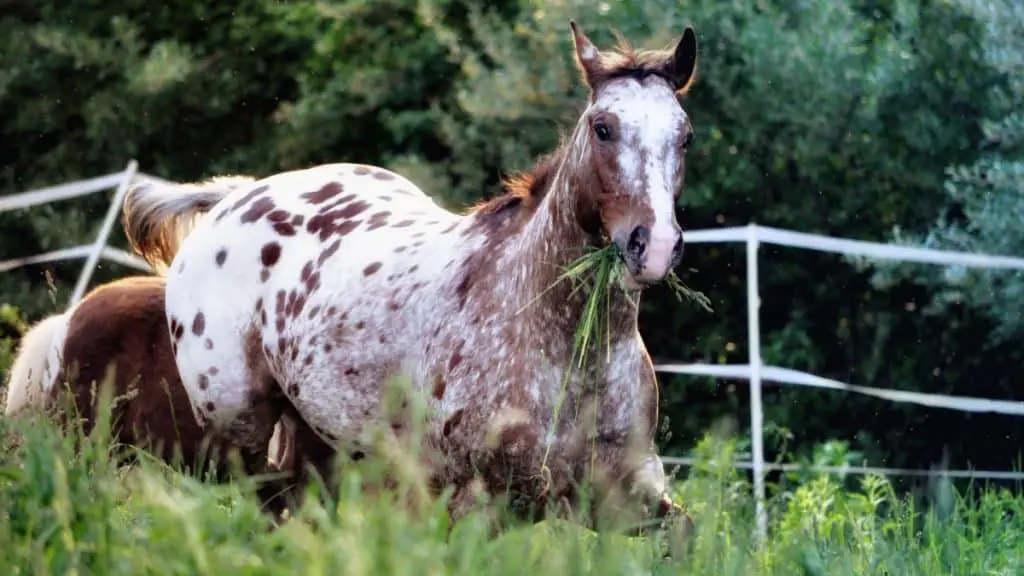
2. The Appaloosa
These horses were bred by the Nez Perce Native American tribesmen in the American Northwest. Used for hunting and herding, about a tenth of the breed gained fame due to their spotted coat.
Named Palouse after the river of the same name in Northern Idaho, the name gradually morphed into the modern version – Appaloosas.
The Appaloosa breed has grown up around people and employed in many ways. Those traits have carried through to the modern breed. Easily distinguishable by their spots, Appaloosas can be ridden on the trail with either English or Western gear.
Naturally playful and curious, Appaloosas are great horses to have around family and children. They have lots of personality, but they stay calm at almost all times. For this reason, Appaloosas are often mentioned as the best horses to have around children.

3. The Morgan Horse
The Morgan Horse breed was sired by a single stallion, Figure, who was born in 1789 in Springfield, MA, and owned by Justin Morgan.
Originally, they were bred to be versatile – from working on farms to being race- and show horses. That versatility has carried through to this day, along with their good looks.
Morgan Horses, with their refined looks, high neck postures, are always curious and ready to go on a quest. On the other hand, they are often the gentlest of creatures who will allow multiple scrambling kids scramble over their backs without shying or stomping.
They have an innate disposition to be people-pleasers – if you are looking for a horse companion to be your best friend without too much effort, get a Morgan horse.
Overall, Morgan horses are often known to provide the best rides.
4. Connemara Pony
Who doesn’t love the idea of owning a pony, especially if you’re a kid? And which parent doesn’t fear a shying, skittish pony throwing a rider from its back?
Enter the Connemara Ponies. Combine the playfulness and size of the pony – suitable for children and midsized adults – with calmness and a will to please their human companions. They have been described as “dignified”, a testament to the fact that you will rarely get temper tantrums from your pet.
These horses are sturdy, and with a little bit of care and vet check-ups, a Connemara Pony can be with your family for many years to come.
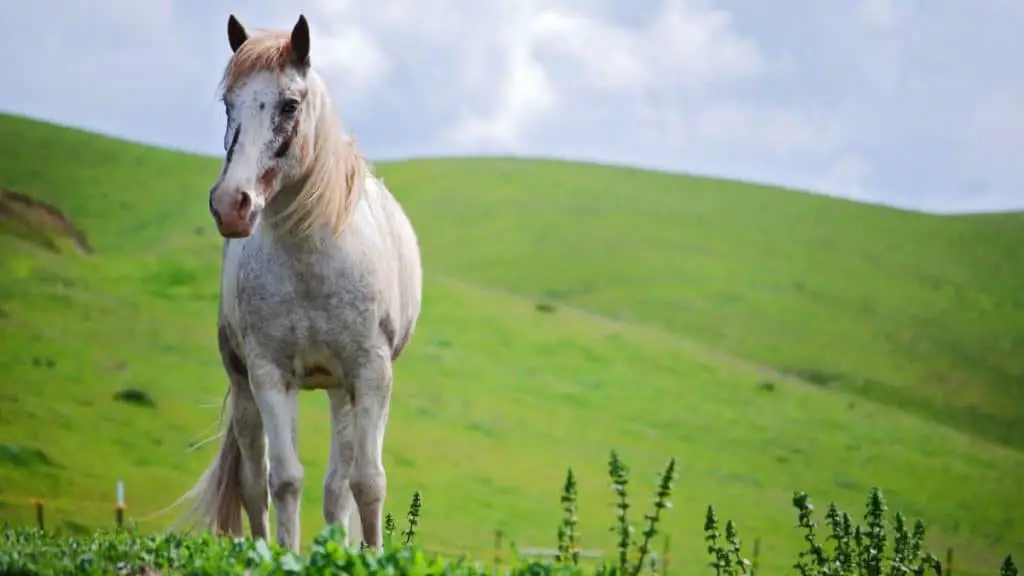
5. Tennessee Walking Horse
Tennessee Walking Horses are one of the calmest breeds available, provided you are sufficiently tall. Their size makes them a bit daunting for children.
Bred to work on plantations, these horses are intelligent and attentive. Their smooth walk (you could sip tea while out and about, as the saying goes) has given them their name, but their calm and stable disposition comes along with it. Saddle sores will be a thing of the past if you switch your ride to a Tennessee Walking Horse.
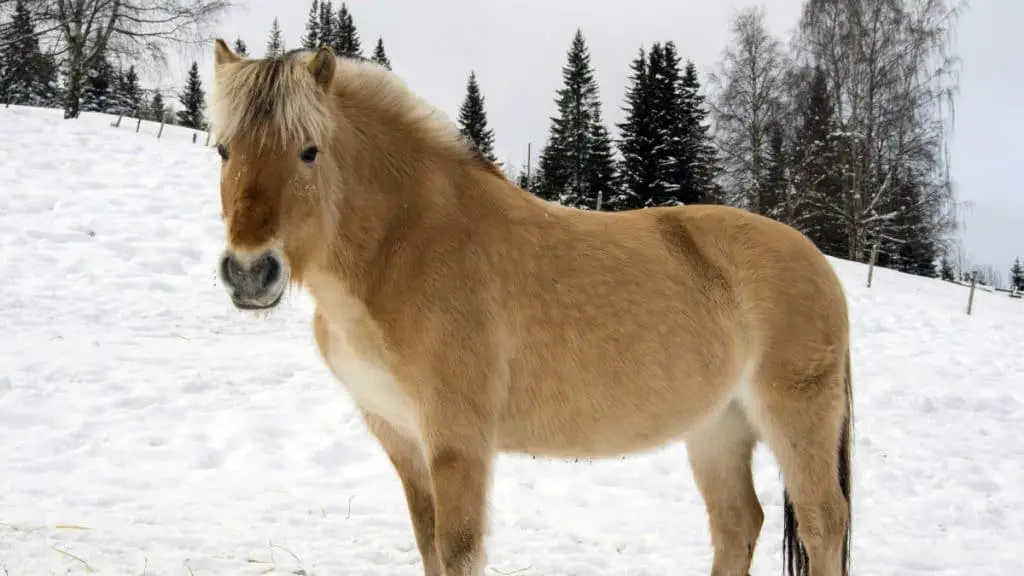
6. The Norwegian Fjord Horse
Viking cavalrymen of yore favored these horses for their balance and smoothness of gait, but Norsemen used them extensively as work horses in testing conditions. These characteristics, combined with a 2,000-year history of domestication, make them family favorites.
The Norwegian Fjord horse is heavy set, but incredibly well balanced, reducing the risk of a fall from height for beginning riders. Given their training to draw carriages, the current versions of the Fjord Horse exude calmness rather than the sparks of battle.
They are great horses to strike poses with, given their looks and propensity to be calm around people. They are easy to handle for children and adults alike. Seniors with physical limitations are able to ride them easily given their smooth gait, calmness and balance.
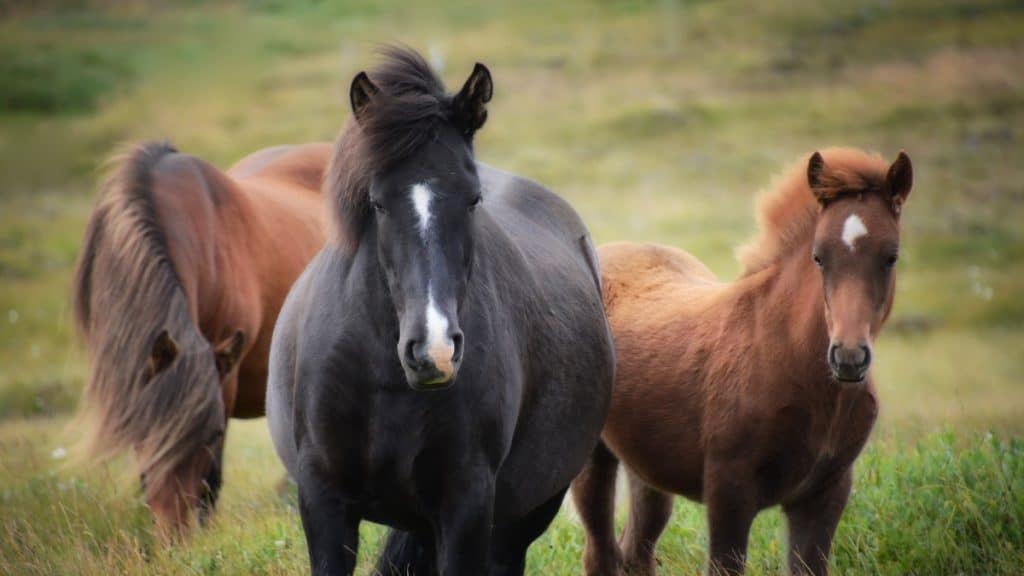
7. The Icelandic Horse
The Icelandic horse, which is one of the oldest breeds of horses, underwent a significant genetic mutation some 1,000 years back – they developed the ability to amble, a very rare quality in those days.
Due to the Norsemen outlawing interbreeding from the 10th century onwards, the Icelandic horses have changed little in the intervening centuries.
The Icelandic horse’s tolt gait, essentially an extremely smooth version of a very fast walk, is still a boon for riders and particularly suited for beginners.
Their shorter height and stability, combined with a calm disposition and ability to persevere in adverse weather conditions make them a favorite pet – be it as a farm worker, pack horse, or for a family with children.

8. Welsh Cob
One of the gypsy cob breeds, the Welsh Cob developed as a cross between the Welsh Mountain Pony and imported species like the Arabian and the Thoroughbred.
Bred as a war horse, the Welsh Cob of today is equally adept at farm work or drawing a cart. It is adept at walking smoothly on uneven ground, and to endure through food deprivations if necessary.
Welsh Cobs are known for their intelligence and gentle manners, which make them popular as show horses as well.
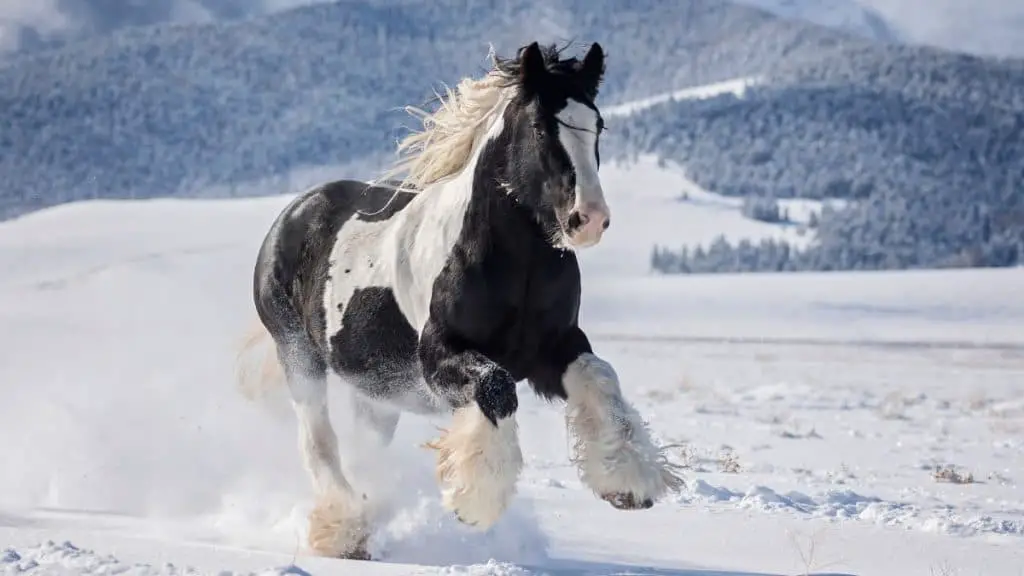
9. Irish Vanner
The Irish Vanner is part of the types of “gypsy” draft horses found in the British Isles, in this case, Ireland. They were bred as draft horses but are now also reputed to be among the calmest breed to have around a property.
Typically smaller in size with pronounced rumps, Irish Vanner horses are reputed for their smooth gaits, statuesque heads, sweet, intelligent manner, and calm disposition – along with a work ethic that has been handed down over generations.
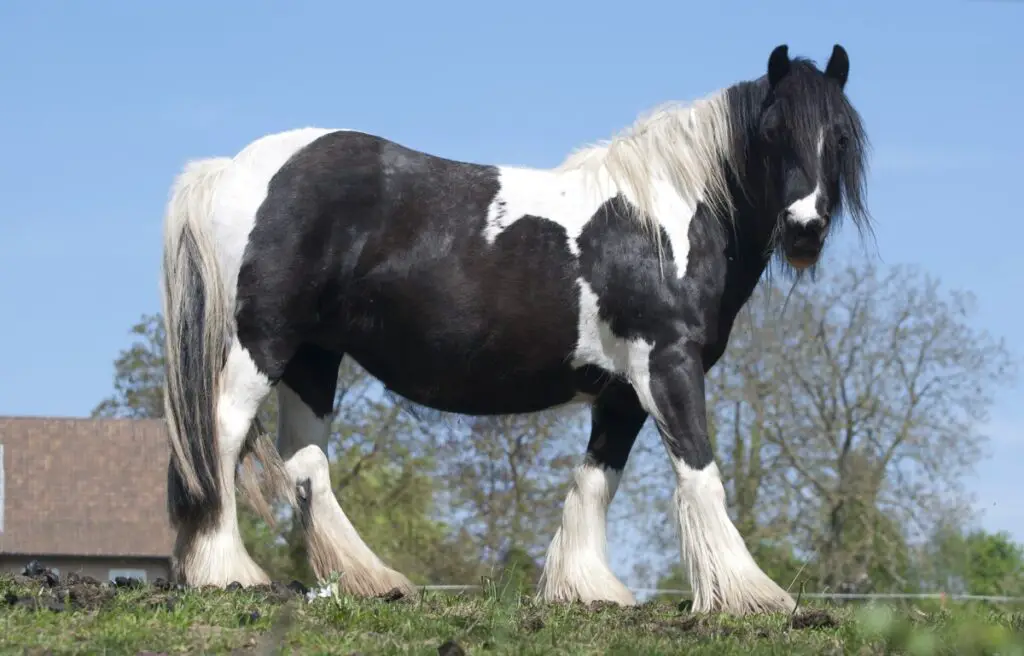
10. Draft Horses
Every other horse or pony mentioned above is a warm breed. Should you consider a draft horse, which is a cold breed?
The pros and cons are simple. They are certainly not excitable, rather they are gentle and trusting.
However, they may be difficult to ride for beginners and children, being large in size and unwieldy. Smaller versions of such horses, such as the American Quarter Horse, are thus considered an ideal mix of calmness and comfort.
Breeds Of Horses Generally Fall Under Three Categories
Horses are generally classified under three categories:
- Hot breeds of horses are great for racing, equestrian and high endurance challenges. However, they tend to be skittish and difficult to control till they get used to a rider and/or riding style. They might make great show horses but would pose a challenge for a first-time horse owner learning to ride. Arabians and Thoroughbreds fall under this category.
- Cold breeds, on the other extreme, tend to be very docile and easy to handle. Known for their ability to work hard, these horses are literally bred to pull ploughs and heavy wagons across uneven ground. Examples include various breeds of draft horse, such as the Clydesdales. While their disposition fits, cold-blooded horses also may not be suitable for new owners who are looking forward to horse riding activities. They tend to be large and plodding, not necessarily exciting or comfortable.
- The ideal in-between are warm breed horses that are calmer than the hot, but smaller and more agile than the cold breeds. It often makes sense to pick beginner horses from among these species, a list of which is produced above.
Decide What You Want Out Of Your Horse
Before picking a horse, decide what you are planning to get out of it. A family horse, with small children, may need to be one of the calmest breeds you can find – even so, a Clydesdale may not be the right choice unless there is some work to be done around your property.
The reason warm breed horses are often favored by owners who are not looking to race thoroughbreds or win ribbons at equestrian events is simple – a horse breed for beginners and/or a family that enjoys riding without going overboard must share certain characteristics.
Desired Qualities Of Calm Horses
Calm horse breeds can be characterized by certain traits. While you may look for additional ones in your mount, covering these basic characteristics will typically stand you in good stead:
1. Gentleness
Calm horses are easy to lead or halter and do not tend to lash out at the slightest disturbance around them. Placidity cannot be overemphasized as a desired quality in a horse being ridden by a beginner.
2. Trusting And Trustworthy
Horses that pick commands up quickly, and then adhere to them routinely without fuss, are worth their weight in gold when choosing beginner horses.
More fickle-minded horses need constant supervision till the point that they are tamed and bonded with a specific master.
A trusting horse can make the difference between a lot of bother when off the saddle and potentially serious injury when riding.
3. Attentiveness And Intelligence
These two qualities can go hand in hand since the more intelligent a horse is, the more likely it is to quickly understand the directions you are asking it to follow. However, attentiveness is also necessary.
A nervous horse will tend to shift its attention to many things in its environment, not necessarily its rider and/or trainer.
A calm, trusting horse on the other hand should have the ability to focus on the command and the direction being provided, creating a safer environment.
4. Respect And Awareness
Many accidents are caused by horses that do not understand that they are 1,000+ lb. creatures, and that get too frolicky and close to the action. Being stepped on by a horse can cause serious injury or even death. Horses that are aware of their surroundings, especially much smaller humans, are thus desirable.
The overall impact of qualities like those denoted above is that calm breeds of horses suitable for beginning riders are easier to co-exist with. They do not kick up a fuss while being led in and out of their stables, stand still when they are being petted or washed down – the natural playfulness is tempered with the ability to be attentive and make intelligent decisions based on the commands it has been taught to follow.
The Final Word
The species shown above are not necessarily the only calm horse breeds you could find. There are lots of local variations and crossbreeds. Plus, as mentioned above, an individual horse could still be skittish and/or bad-tempered, so choose carefully.
What can be said for sure, though, is that if you were to choose a breed such as the Quarter Horse or one of the others on this list, the chances are very high that you would get a faithful companion that will be fun to ride without being dangerous.
References
- https://horserookie.com/calmest-horse-breeds/
- https://horsetoloan.com/horse-riding/the-calmest-horse-breeds/
- https://www.besthorserider.com/which-is-the-calmest-horse-breed-for-beginners/
- https://animals.mom.com/horses-temperament-11145.html
- https://www.fei.org/stories/lifestyle/horse-human/best-horse-breeds-novice-riders
